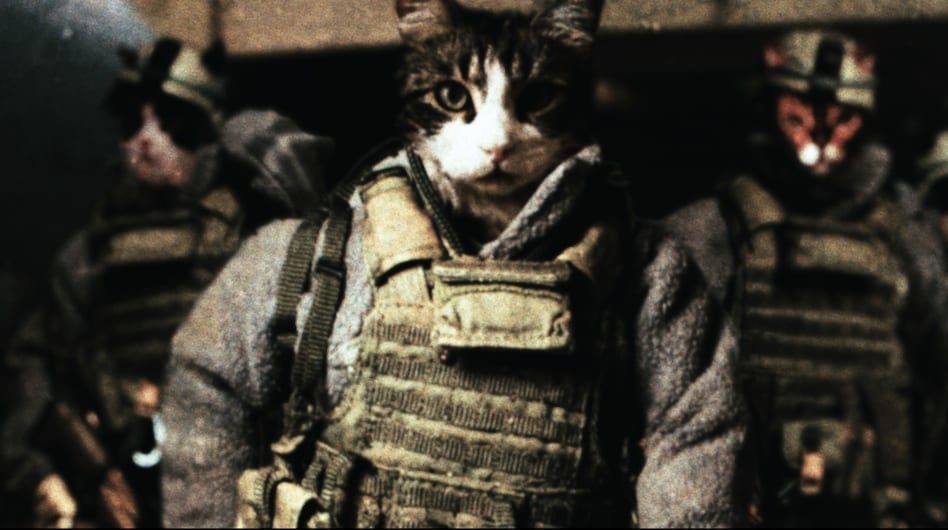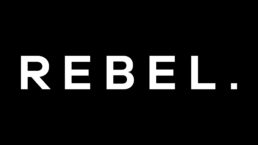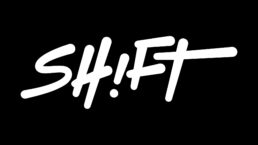1.4 talks with London-based director Hasraf Dulull about Fubar Redux, his motion comic film about a political war set in an alternate reality with cats and dogs, and the power of crowd source funding.
Where did the idea for Fubar Redux come from and how did it evolve?
In order to realise my epic vision without the huge Hollywood blockbuster budgets yet still with the look and feel of a big budget film, I developed a visual style which would work well with the 2.5D compositing / animation workflow which also served well with the story telling of the film too. This style was motion comics.
Motion comics?
Motion comics are basically cut down animated versions of each comic book frame using cut outs from the artwork to create parallax and depth with each shot. Examples can be seen on the Bluray of “Inception” with the ‘Cobal Story’ or on the Bluray of “Predators” which have several motion comic stories which didn’t get covered in the film and of course there is the Watchmen animated comic DVD.
I wanted to use my vfx compositing experience to take motion comic cinema to another level with extra depth and production values but still keep the core principles of motion comic story telling. With 2.5D compositing this opened up a range of possibilities to push the motion comic visuals with better animation, more depth and cinematography yet treating each shot like a comic book frame, or panel with good pacing, framing and action. I wanted to get away from the usual static like animated action or comic book drawn visuals you get in most of these motion comics. I wanted a photography-based visual look to the film.
I created Fubar originally in 2010 as a technology demo for the vfx technology company – The Foundry. It was received so well online, at vfx conferences and within the vfx industry that I decided to make it into a complete short film.
I am heavily into 2.5D compositing; this is basically cheating 3D in a compositing environment as opposed to going into actual 3D CG cameras. I was one of the earlier users of The Foundry’s Nuke, so I had a good relationship with them as I was often demo’ing the tool for them in productions which I was involved in.
It looks mega budget but we understand you used crowd sourcing funding? How did you go about this and did this allow the creativity you wanted?
The project was self-funded completely by myself since I was handling all the vfx and animation with editorial duties handled generously and skillfully by my good friend Deelan Sital (who earned the name Final Cut Pro Ninja during the project) but I needed the audio work and voice acting to have the same attention and high-end feel as my visuals and that needed funding support. A friend of mine Seth Shekovsky from Little Red Robot (who also acted as executive producer on the film) pointed me towards Kickstarter.
I liked the idea of crowd-source funding rather than the traditional route of getting funding from a film council funding board etc, because I wanted to own and keep all the rights to my film and do what I want with it, no long processes of interviews and paper work, but more importantly getting the audience to believe in the project rather than funders who sit on a board.
This was my first foray into crowd source funding as a producer / director. So I was very excited yet scared. One thing I learnt is that you have to put so much work into pushing your crowd source fund via social media and word of mouth. I managed to raise $6,256 from the pledged goal of $5K.
And that was enough to fund the project?
This was enough for me to pay the editor and audio guys and for marketing and PR costs as well as additional vfx support work I needed to make the final cut of the film.
I didn’t need much funding since I was doing ALL the shot creations and animation myself, but there were some elements like the motion graphics of on-screen displays that needed doing and rendering out as elements for me to put into Nuke, so I had some help with that as well as the extensive amount of rotoscoping required for the DSLR photography I shot for the miniatures (posed marine models, tanks, helicopters etc) and of course the cats and dogs.
But the point was, I was able to gain so much interest from the fans of the film to allow me to make the extended redux edition. The power of social media is amazing! And is definitely the future for indie film making and distribution.
Following the same vfx support model I used for the first version, Fubar has visual effects technology support from Peregrine Labs (the developers of the powerful depth of field plugin – Bokeh), Gen-Arts (the award winning Sapphire plugins used for years on big movies) and Shotgun (the asset management tool system used in most of the major facilities worldwide).
Just like the Kickstarter pledgers, the new technology sponsors gained were basically from the success of the original version which meant less risk for them as they knew what they were supporting and its potential.
In fact having vfx technology support not only allowed me to have access to these tools for free (which usually costs thousands for a license) but also free exposure with their marketing team like at Siggraph.
We see in the credits you thanked everyone who sent in pictures of their cats and dogs – how did you go about this?
I created a trailer as well as used strategies such as ” send in your pet (cats or dogs) photos and they will be cast into the film. A few people did send their cats and dogs photos and these were used in the film as marines and generals and are credited in the film too.
What was a key lesson you learnt from the process of the production?
One of the many things I learnt from this project is audio is of equal importance as visuals. Being a visually driven director I could have easily left audio as a last minute thing, but I am pleased that I didn’t, because the amazing audio work created by Luis Almau and Henning Knoepfel not only completed the film to the high standards I was aiming for but it enhanced all the animation, visual effects and style of the film to another level.
And did it take forever to create?
The whole short film took around 18 months to create from start to finish while I was freelancing at studios / vfx facilities during the day.
What now?
I have been approached by agencies about the possibility of creating a feature version and other related work, so the future is bright.
I have six months blocked out in my schedule to push the promotion of the film hard via social media, festivals and events and even though it is hard work – I love it!













